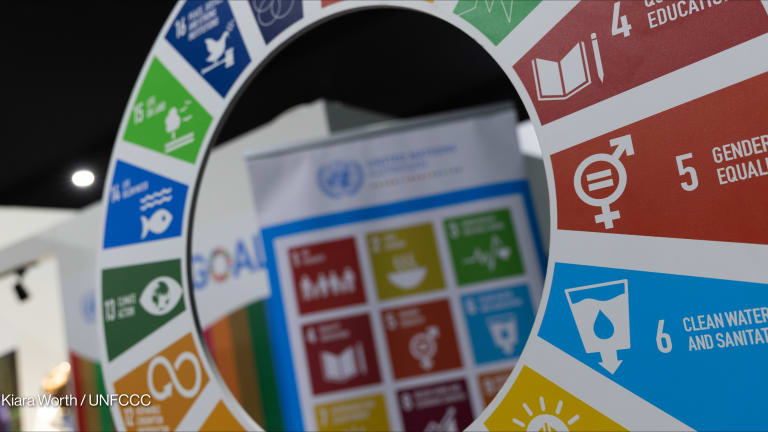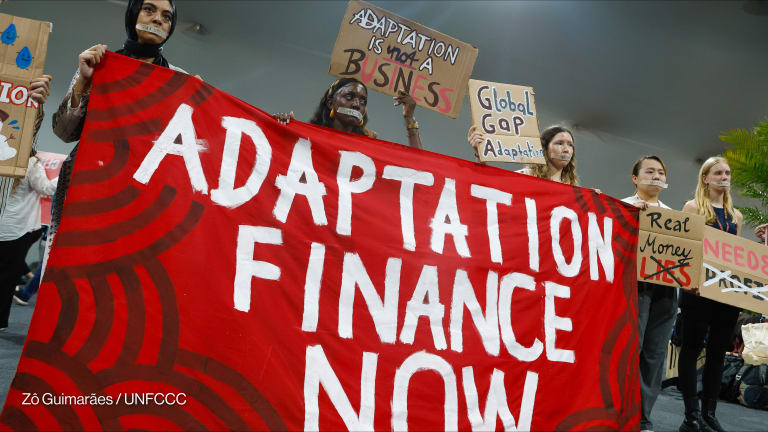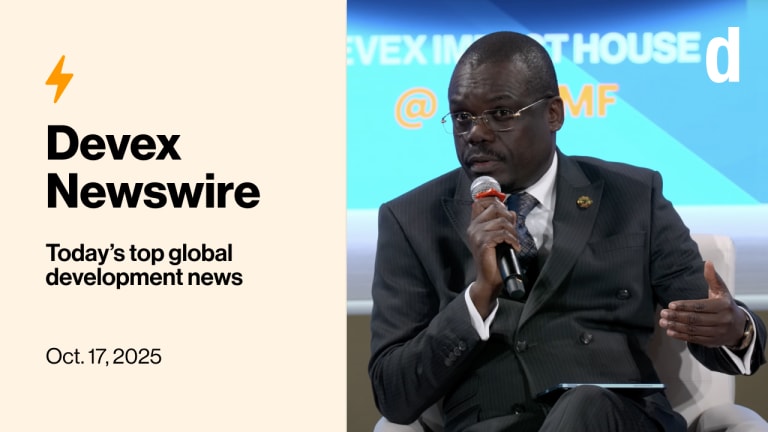The 'secret' to JICA's disaster risk reduction
Countries around the world look to Japan as a leader in reducing the risks of disaster. Here's what two JICA experts have to say about the agency's approach to successful mitigation management.
TOKYO, Japan — Every year ahead of Japan’s four-month typhoon season, teams of experts are deployed to check dikes, floodwalls, and other disaster-resilient infrastructure for mold or damage, said Miki Inaoka, senior deputy director in Japan International Cooperation Agency’s Disaster Risk Reduction Group. The group crosschecks its findings with a nation-wide infrastructure database that shows where structures are located, when something was last examined, and what prior risks have already been cataloged. “I think the secret of our JICA cooperation, in my opinion, is mitigation in the disaster management cycle.” --— Yukinari Hosokawa, senior deputy director, JICA’s Disaster Risk Reduction Group “This doesn’t happen in many other countries,” Inaoka said. But it should, she added, and it’s one example of Japan’s operational approach to disaster mitigation that can be shared with middle- and low-income nations. JICA prioritizes its disaster work based on the action areas outlined in the Sendai Framework — separating activities into mitigation, preparedness, response, and recovery. The agency is involved in each of these phases in various capacities, but it is in mitigation where the country’s strengths really shine, according to Yukinari Hosokawa, senior deputy director in JICA’s Disaster Risk Reduction Group. “I think the secret of our JICA cooperation, in my opinion, is mitigation in the disaster management cycle,” Hosokawa told Devex. Asia and the Pacific account for 57 percent of the global death toll from natural disasters since 1970, and a person in Asia-Pacific is five times more likely to be hit by a natural disaster than someone living in other regions. The region lost $1.3 trillion in assets between 1970 and 2016 due to natural disasters, and the cost of the damage has been rising as climate change worsens. As a result, there has been a growing focus on mitigation measures such as the construction of levees and anti-seismic buildings to protect against and withstand severe weather. But because of the disparity of global disaster distribution, donor efforts to address disaster risk also look different around the world. That poses difficulties when donors from Europe, a continent that faces far fewer threats from natural disasters such as earthquakes and hurricanes, get too focused on solutions that better apply to populations in their region rather than populations in Asia and the Pacific, Inaoka told Devex. “They experience severe flood maybe once in 10 years, and for those countries, mitigation is not a budget priority,” she said. Instead, they tend to focus more on insurance, which doesn’t necessarily apply in Asian countries, Inaoka said: “The climate is different, the disaster issues are different. It doesn’t pay to do the insurance.” Japan, on the other hand, is one of the only high-income countries that also suffers regular disasters such as earthquakes and typhoons, which allows it to play a unique role as a donor country. “Instead of saving money and spending money for insurance and getting paid after you receive the damages, use that money for little by little mitigation. It’s the philosophy that Japan has developed, which is not recognized in European countries.” Japan can also play a strong role when it comes to governance and assisting countries to deliver on disaster risk reduction plans by encouraging collaboration among national bodies. Asian countries, many of which have strengthened these plans over the past 10 years, still struggle with documentation, following procedures, and overseeing construction management, said Inaoka, who spent four years in post-tsunami Sri Lanka overseeing technical cooperation programs. Following the 2006 Yogyakarta earthquake, JICA assisted the Indonesia government with strengthening its building standards to ensure future buildings are as safe as possible. The Japanese government has experience in re-establishing building codes following its own devastating 1995 Kobe earthquake, which killed more than 7,000 people and destroyed more than 45,000 homes. “The community have received these damages, they understand the sadness or impact, and it’s up to the government to convince them how to make the changes,” Inaoka said “Setting the standards isn’t the difficult thing, it’s just paper. You have to really get it filtered into each and every building that’s going to be reconstructed. That goes to governance — how people check the documents.” During reconstruction in Indonesia, JICA helped government officials ensure that when people requested a subsidy for reconstruction of their home, they knew they had to comply with the standards and only with that approval would they receive the money. Strong governance in the creation of antiseismic infrastructure and other protective measures including levees and water pumps will only become more important in mitigation efforts as the region continues to build resilience to regular natural disasters, Inaoka said. “It’s not just about survival, it’s about keeping your economic activities, keeping your livelihood,” she said. “It’s not just about revival, it’s about protecting critical infrastructure and sustaining economic development.”
TOKYO, Japan — Every year ahead of Japan’s four-month typhoon season, teams of experts are deployed to check dikes, floodwalls, and other disaster-resilient infrastructure for mold or damage, said Miki Inaoka, senior deputy director in Japan International Cooperation Agency’s Disaster Risk Reduction Group. The group crosschecks its findings with a nation-wide infrastructure database that shows where structures are located, when something was last examined, and what prior risks have already been cataloged.
“This doesn’t happen in many other countries,” Inaoka said.
But it should, she added, and it’s one example of Japan’s operational approach to disaster mitigation that can be shared with middle- and low-income nations. JICA prioritizes its disaster work based on the action areas outlined in the Sendai Framework — separating activities into mitigation, preparedness, response, and recovery. The agency is involved in each of these phases in various capacities, but it is in mitigation where the country’s strengths really shine, according to Yukinari Hosokawa, senior deputy director in JICA’s Disaster Risk Reduction Group.
This story is forDevex Promembers
Unlock this story now with a 15-day free trial of Devex Pro.
With a Devex Pro subscription you'll get access to deeper analysis and exclusive insights from our reporters and analysts.
Start my free trialRequest a group subscription Printing articles to share with others is a breach of our terms and conditions and copyright policy. Please use the sharing options on the left side of the article. Devex Pro members may share up to 10 articles per month using the Pro share tool ( ).
Kelli Rogers has worked as an Associate Editor and Southeast Asia Correspondent for Devex, with a particular focus on gender. Prior to that, she reported on social and environmental issues from Nairobi, Kenya. Kelli holds a bachelor’s degree in journalism from the University of Missouri, and has reported from more than 20 countries.








